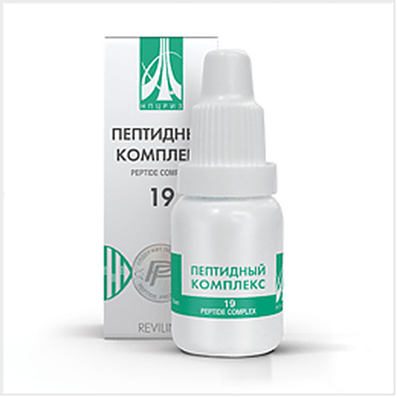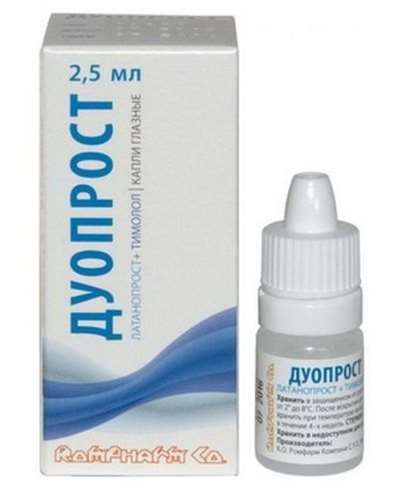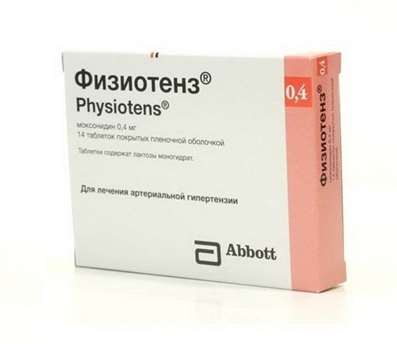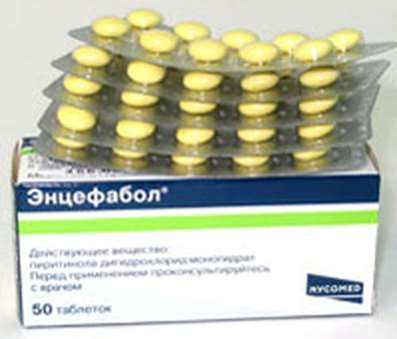Instruction for use: Dioxomethyltetrahydropyrimidine
I want this, give me price
Trade name of the drug – Methyluracil, Methyluracil-AKOS, Methyluracil tablets 0,5 g, Spongia «Meturacolum», Stisamet
The Latin name of the substance Dioxomethyltetrahydropyrimidine
Dioxomethyltetrahydropyrimidinum (genus. Dioxomethyltetrahydropyrimidini)
Chemical name
2,4-Dioxo-6-methyl-1,2,3,4-tetrahydropyrimidine
Gross formula
C5H6N2O2
Pharmacological group:
Stimulators of hematopoiesis
Anabolics
Regenerants and reparants
The nosological classification (ICD-10)
D64.9 Anemia, unspecified: Anemic states; Anemia of various origins; Hematopoietic disorders
D69.6 Thrombocytopenia, unspecified: Hemorrhagic diathesis of thrombocytopenic origin; Hemorrhagic syndrome of thrombocytopenic origin; Idiopathic thrombocythemia; Thrombocytopenia; May-Hegglina anomalies; Hereditary thrombocytopathies; Fever with thrombocytopenia
D70 Agranulocytosis: Agranulocytosis is hereditary; Aleicia; Aleykocytosis; Agranulocytic angina; Angina agranulocytic; Primary cytopenia
D72.8.0 * Leukopenia: Autoimmune neutropenia; Congenital neutropenia; Granulocytopenia; Idiopathic and drug-induced leukopenia; Idiopathic neutropenia; Leukopenia aplastic; Leukopenia radiation; Leukopenia with radiation therapy; Radiation leukopenia; Hereditary neutropenia; Neutropenia in patients with AIDS; Periodic neutropenia; Radiation leukopenia; Persistent neutropenia; Febrile neutropenia; Two-stage cytopenia; Radiation cytopenia; Neutropenia is cyclic
K25 Stomach ulcer: Helicobacter pylori; Pain syndrome with gastric ulcer; Pain syndrome with peptic ulcer of stomach and duodenum; Inflammation of the gastric mucosa; Inflammation of the mucosa of the gastrointestinal tract; Benign ulcer of the stomach; Disease of the stomach and duodenum, associated with Helicobacter pylori; Exacerbation of gastroduodenitis against ulcer disease; Exacerbation of peptic ulcer; Exacerbation of gastric ulcer; Organic GI disease; Peptic ulcer of the stomach and duodenum; Postoperative Stomach Ulcer; Recovering ulcers; Symptomatic Stomach Ulcers; Chronic inflammatory disease of the upper gastrointestinal tract associated with Helicobacter pylori; Helicobacter pylori eradication; Erosive-ulcerative lesions of the stomach; Erosive lesions of the stomach; Erosion of the gastric mucosa; Peptic Ulcer; Stomach ulcer; Stomach ulcer; Ulcerative lesions of the stomach; Symptomatic ulcers of the stomach and duodenum
K26 Ulcer of duodenum: Pain syndrome with duodenal ulcer; Pain syndrome with peptic ulcer of stomach and duodenum; Disease of the stomach and duodenum, associated with Helicobacter pylori; Exacerbation of peptic ulcer; Exacerbation of duodenal ulcer; Peptic ulcer of the stomach and duodenum; Recurrence of duodenal ulcer; Symptomatic ulcers of the stomach and duodenum; Helicobacter pylori eradication; Erosive-ulcerative lesions of the duodenum; Erosion-ulcerative duodenal lesions associated with Helicobacter pylori; Erosive lesions of the duodenum; Peptic ulcer disease of the duodenum; Ulcerative duodenal lesions
K51 Ulcerative colitis: Colitis acute ulcerative; Colitis ulcerative; Ulcerative-necrotic colitis; Colitis ulcerative-hemorrhagic nonspecific; Colitis ulcerative and trophic; Colitis ulcerative idiopathic; Colitis ulcerative nonspecific; Nonspecific ulcerative colitis; Proctocolitis ulcers; Hemorrhagic purulent rectoxitis; Rectoccolitis ulcerative-hemorrhagic
K52 Other non-infectious gastroenteritis and colitis: Syndrome of senile intestine; Sigmoiditis; Non-infectious gastroenteritis; Gastroenterocolitis; Colitis; Colitis nondiscriptional; Colitis noninfectious; Colitis chronic; Colitis chronic non-infectious; Local enteritis; Non-infectious sigmoiditis; Chronic inflammatory diseases of the large intestine; Chronic inflammatory diseases of the small intestine; Chronic enterocolitis; Chronic atrophic gastroenteritis; Chronic gastroenteritis; Chronic colitis; Chronic enterocolitis; Enteritis; Enteritis non-infectious; Enterocolitis chronic non-infectious; Disease of the large intestine
K62.9 Disease of anus and rectum, unspecified: Inflammatory bowel disease; Inflammation of the anal region; Inflammation in the anus; Anorectal infections; Anusitis; Pathology of the rectum
K76.9 Liver disease, unspecified: Change in liver function in heart failure; Restoration of impaired liver function; Severe liver function disorders; Hepatitis; Hepatosis; Hepatopathy; Liver dysfunction; Diseases of the liver; Impaired liver function; Dysfunction of the liver; Infringements of function of a liver of an inflammatory etiology; Functional liver failure; Functional disorders of the liver; Chronic liver disease; Chronic diffuse liver disease; Enterogenic diseases of the gallbladder and liver
K85 Acute pancreatitis: Acute pancreatitis; Pancreatitis; Pancreatitis haemorrhagic; acute Pancreatitis; Sepsis pancreatogenic; Acute necrotizing pancreatitis; edematous pancreatitis
K86.1 Other chronic pancreatitis: Chronic pancreatitis; recurrent pancreatitis; Pancreatitis chronic; Exacerbation of chronic pancreatitis; Pancreatitis with an exocrine insufficiency
L56 Other acute skin changes caused by ultraviolet radiation: Exposure to UV rays; Acute skin changes caused by ultraviolet radiation; Sun Dermatitis; Photodermatitis; Photodermatosis; Photodermatoses; Dermatitis sunflower
L89 Decubital ulcer: Decubital gangrene; Bedsores; Bedsore; Secondary-infected bedsores; Gangrene decubital
L98.4.2 * Trophic skin ulcer: Varicose ulcer; Varicose ulcers; Cutaneous ulcer; Non-healing ulcers; Trophic ulcer; Trophic ulcer of lower leg; Trophic skin lesions; Trophic after-burn ulcers; Trophic ulcers; Trophic skin ulcers; Ulcer of lower leg; Ulcer of skin; Ulcer of trophic skin; Ulcer on legs; Ulcerative necrosis of the skin; Ulcer of shin; Ulcer of the lower leg; Ulcers of lower extremities; Difficult healing ulcers
T14.1 Open wound of unspecified body region: Secondary healing processes; Sluggishly granulating wounds; Sluggishly healing wounds; Sluggish wounds; Deep Wounds; Purulent wound; Granulating wounds; Prolonged non-healing wound; Long-lasting non-healing wound and ulcer; Long-lasting non-healing soft tissue wound; Healing of wounds; Wound healing; Capillary bleeding from superficial wounds; Bleeding wound; Radiation Wounds; Slowly epithelializing wounds; Minor cuts; Suppurated wounds; Violation of wound healing processes; Breach of skin integrity; Violations of the integrity of the skin; Violations of the integrity of the skin; Small cuts; Uninfected wounds; Uncomplicated wounds; Operating wound; Primary treatment of surface contaminated wounds; Primary wound treatment; Primary-delayed treatment of wounds; Poorly cicatrizing wound; Poor wound healing; Bad wound; Superficial injury; Superficial wound with mild exudation; Wound; The wound is large; Bite wound; Wound process; Wounds; Wound healing wounds; Stump Wounds; Wounds for gunshot; Wounds with deep cavities; Difficult healing wounds; Difficult wounds; Chronic Wounds
T14.2 Fracture in unspecified part of body: Internal fixation of bone fracture; Acute period after fractures of bones; Edema after interventions for fractures; Fracture; Fracture of bones; Fracture of bone; Fractures of bones; Reposition of bone fragments in fractures; Traumatic bone injuries; Traumatic bone injury; Injuries of the osteoarticular system; Injuries to bone tissue
T30 Thermal and chemical burns of unspecified site: Pain syndrome with burns; Pain in burns; Pain with burns; Sluggishly healing post-burn wounds; Deep burns with a wet scab; Deep burns with abundant compartments; Deep burn; Laser burn; Burn; Burn of rectum and perineum; Burn with mild exudation; Burn disease; Burn injury; Superficial burn; Superficial burn of I and II degree; Superficial skin burns; After-burn trophic ulcer and wound; Post-burn complication; Loss of fluid in burns; Sepsis burn; Thermal burns; Thermal skin lesions; Thermal burn; Trophic after-burn ulcers; Chemical burn; Surgical burn
T52.1 Toxic effect of benzene: Benzene intoxication; Intoxication with benzene; Chronic intoxication with benzene; Chronic benzene poisoning
T64 Toxic effect of food-polluting aflatoxin and other mycotoxins: Aleicia is an alimentary-toxic; Alimentary-toxic aleukia; Hematopoietic endemic anemia; Mycotoxicosis alimentary-hemorrhagic; Mycotoxicosis acute alimentary; Poisoning with ergot; The fire of Saint Anthony
T66 Unspecified radiation effects: Radiation disease; Diarrhea radiation; Gastrointestinal syndrome with irradiation; Radiation sickness; Radiation disorders of mucous membranes; Irradiation chronic; Osteoradionecrosis; Acute radiation sickness; Acute and chronic radiation injuries; Acute radiation syndrome with radiation therapy; Subacute and chronic radiation sickness; Radiation Neuropathy; Radiation edema; Radiation damage to the nervous system; Radiation immunodeficiency; Radiation syndrome; Radio-epileleitis; Radiation acute syndrome; State after irradiation; Cytopenia due to previous radiation or chemotherapy; Cytopenia radiation; Cytopenia due to radiation therapy; Cytopenia due to chemotherapy
Z54 recovery period: The recovery period; The recovery period after illness; Recovery; The recovery from the flu and colds; Recovery after illness; The lack of mineral salts in the period of convalescence; The period of recovery after illness; The period of recovery after illness and surgery; The period of recovery after a serious illness; The period of convalescence after illness; rehabilitation period; rekovalestsentsii period after infectious diseases; decubation; The period of convalescence after surgery and infectious diseases; The period of convalescence after prolonged infections; The period of convalescence after serious diseases; The period of convalescence after severe infections; Rehabilitation period; convalescent state; Convalescence after illness; Convalescence after infectious diseases; Convalescence after debilitating diseases; Convalescence after infectious diseases; Convalescence at an elevated blood loss; Status of convalescence after illness
CAS code
626-48-2
Characteristics of the substance Dioxomethyltetrahydropyrimidine
White crystalline powder odorless. Slightly soluble in water (up to 0.9% at 20 ° C) and alcohol. Almost nerastvorim in ether and chloroform.
Pharmacology
Mode action - Anti-inflammatory, immunostimulating, anabolic, accelerating wound healing, leukopoietic, hematopoietic.
Application of the substance Dioxomethyltetrahydropyrimidine
For oral administration: leukopenia (mild forms, including those resulting from chemotherapy of malignant neoplasms, with X-ray and radiation therapy), agranulocyte angina, alimentary-toxic aleukia, anemia, thrombocytopenia, benzol intoxication, radiation injuries, convalescence (after Severe infections), gastric ulcer and duodenal ulcer (as part of combination therapy), flaccid wounds, burns, bone fractures, hepatitis, pancreatitis.
Locally: flaccid wounds, burns, bone fractures, photodermatitis, trophic ulcers, pressure sores, deep wounds.
Rectal: rectum, sigmoiditis, ulcerative colitis.
Contraindications
Hypersensitivity, for ingestion - leukemia (leukemia, especially myeloid), lymphogranulomatosis, hemoblastosis, malignant neoplasms of the bone marrow; Locally - redundancy of granulations in the wound; Rectally - children's age till 8 years.
Side effects of Dioxomethyltetrahydropyrimidine
Headache, dizziness, heartburn, allergic reactions; For the sponge (optional) - pain in the wound area (due to its contraction with the drying of the sponge, to remove pain, moisten it with Furacil solution or 0.25% procaine solution without removing the sponge); For ointments (optional) - a brief light burning sensation.

 Cart
Cart





